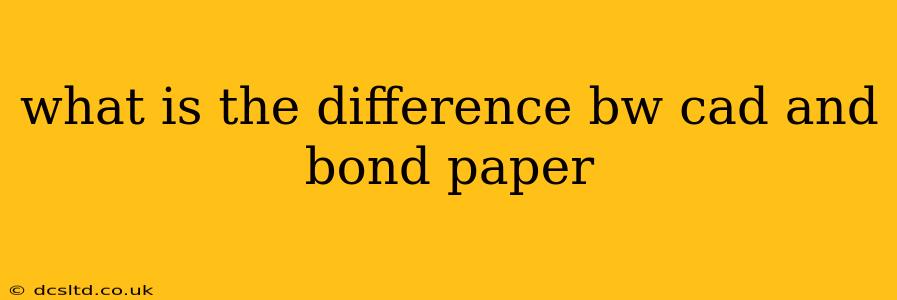What's the Difference Between CAD and Bond Paper?
Choosing the right paper for your project can significantly impact the final result. While both CAD paper and bond paper are used for printing, they differ considerably in their properties, making them suitable for distinct applications. Understanding these differences is crucial for achieving professional-looking and functional documents.
This guide will clarify the key distinctions between CAD paper and bond paper, helping you select the ideal paper for your needs.
What is CAD Paper?
CAD paper, short for Computer-Aided Design paper, is engineered specifically for technical drawings, blueprints, and other detailed graphical outputs. It's designed to provide a stable, high-quality surface for precise ink or toner adhesion. Key characteristics include:
- High-Dimensional Stability: CAD paper is exceptionally resistant to shrinking, warping, or stretching, ensuring accurate line reproduction even after printing. This is crucial for precise measurements and details found in technical drawings.
- Smooth Surface: Its smooth surface minimizes ink bleed and feathering, resulting in crisp, clean lines and sharp details.
- Durability: It's often thicker and more durable than standard bond paper, able to withstand handling and potential revisions.
- Specialized Coatings: Some CAD papers feature specialized coatings to optimize ink or toner adhesion and prevent smudging.
CAD paper is often available in various weights and sizes, and some types are specifically designed for specific printers or plotters (large-format printers).
What is Bond Paper?
Bond paper is a versatile paper type commonly used for everyday printing, writing, and business documents. Its characteristics are generally less specialized than CAD paper:
- Moderate Dimensional Stability: Bond paper exhibits less dimensional stability than CAD paper, meaning it's more prone to minor shrinkage or warping, especially with higher humidity. While suitable for many documents, it's less ideal for precise technical drawings where accuracy is paramount.
- Variable Surface Texture: Bond paper’s surface texture can vary depending on the quality and type. Some are smooth, while others have a slightly textured finish.
- Standard Thickness: Bond paper is typically thinner than CAD paper.
- Cost-Effectiveness: Generally, bond paper is more affordable than CAD paper.
What are the Key Differences Summarized?
| Feature | CAD Paper | Bond Paper |
|---|---|---|
| Dimensional Stability | Very High | Moderate |
| Surface Texture | Very Smooth | Smooth to slightly textured |
| Thickness | Typically thicker | Typically thinner |
| Durability | High | Moderate |
| Cost | Generally more expensive | Generally less expensive |
| Primary Use | Technical drawings, blueprints, CAD output | General printing, writing, business docs |
Which Paper Should I Use?
The choice between CAD and bond paper hinges entirely on the intended use:
-
Choose CAD paper for: Technical drawings, architectural plans, engineering blueprints, precise illustrations where accuracy and dimensional stability are critical.
-
Choose bond paper for: Letters, reports, memos, general printing tasks, where high dimensional stability isn't a primary concern.
Is there a paper that combines the qualities of both?
While a single paper perfectly combining all the ideal qualities of both CAD and bond paper is rare, some high-quality papers offer a balance of smoothness, durability, and reasonable dimensional stability. Look for papers marketed as "premium" or "professional" printing paper – they might provide a suitable compromise depending on your needs.
By understanding the unique properties of CAD and bond paper, you can make informed decisions that ensure your projects are accurately represented and professionally presented.
